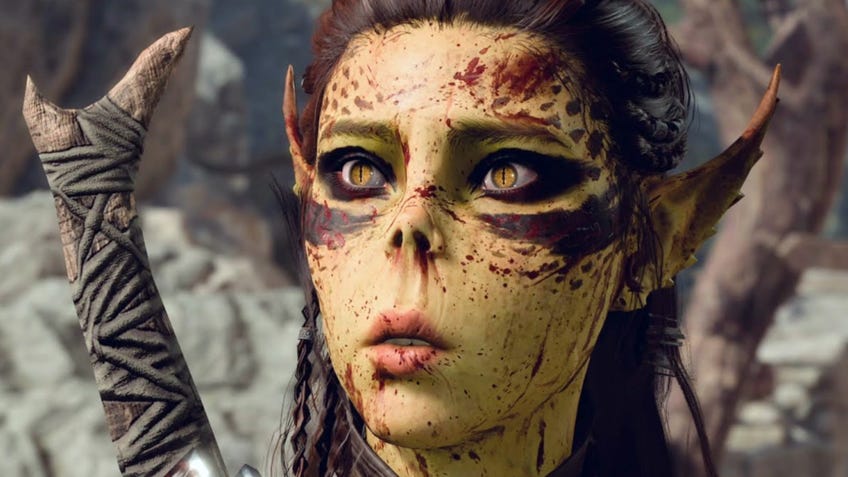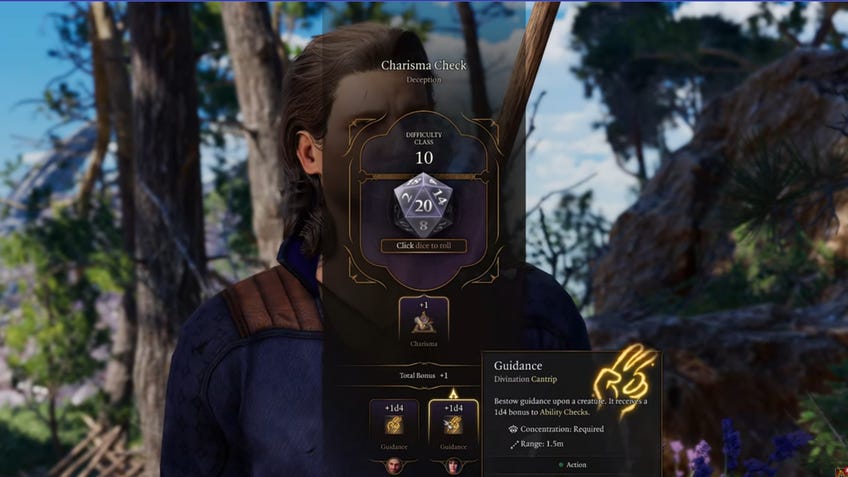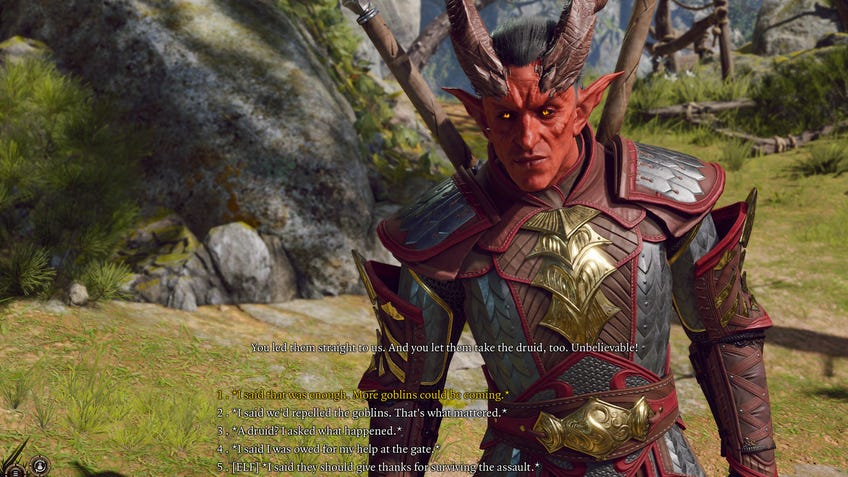Baldur’s Gate 3 has made me more interested in Dungeons & Dragons’ world than I’ve ever been
Fae-run to the D&D video game.
Besides one or two exceptions, the world of Dungeons & Dragons has never interested me. While I’ve taken a passing interest in settings such as Eberron or Planescape, I’ve not had any desire to explore Faerûn – the default fantasy region in which the tabletop roleplaying game takes place – beyond the essentials: magic exists, monsters exist and tieflings exist. The generic nature of D&D’s world may not entirely be its fault; it’s influenced so many fantasy settings in the last 50 years that it just feels bland now. Nevertheless, though I love the fantasy genre, I’ve never cared all that much about one of its most important iterations. Until now.
Baldur’s Gate 3 is a video game that doesn’t just use roughly the same gameplay system as Dungeons & Dragons’ Fifth Edition, it also takes place in the same locations. Players take the role of either one of the game’s pre-made characters – who otherwise serve as non-player party members – or an entirely customisable character who find themselves playing host to a pesky parasite with the potential to turn them into a monster. Baldur’s Gate 3 features all the worldbuilding foundations found in the fantasy RPG’s tabletop iteration – its species, locations, history... - but, for the first time ever, manages to make me care about them.

A huge reason for this is that the non-player characters, environments and storytelling are handled by a program that’s been carefully crafted by many, many people. Instead of relying on the skills and imagination of a human dungeon master and their players, BG3 includes a lushly-animated world featuring professionally-written and well-acted characters. I love playing tabletop RPGs and a video game could never replace the experience. Nevertheless, it’s difficult to deny how effective worldbuilding can be when it’s presented to you in such a sleek and stylish way.
The player character’s parasite problem functions as an excellent icebreaker when interacting with other characters.
Besides all the pizzaz, the other great benefit of having worldbuilding relayed to you via a video game is that it’s communicated in a way that shows, rather than tells. Instead of reading paragraphs upon paragraphs of places and people from a heavy rulebook, BG3 feeds players information about Faerûn – its people, places, history and problems – through character interactions. A key example of this is when players learn that the Githyanki, green-skinned dragon-riding worshippers of Tiamant, are a feared and mistrusted people through the way others interact with Gith warrior Lae’zel.
If players venture into the goblin camp located in an ancient, abandoned temple, they can learn about a wide variety of topics - from the fact that Loth drow are hostile against other societies to the specific and exceedingly creepy worship of Loviatar, the Mistress of Pain. Though these are all subjects I know a cursory amount about – it's impossible not to when you regularly write about D&D – they're not something I’ve been interested in until now. Playing BG3 finds me willingly seeking out intriguing-looking individuals I come across not just because I want to progress in the game, but because I genuinely want to see what I can learn through interacting with them.
Players can obviously also gain information like this in a game of Dungeons & Dragons, but because you’re the only one controlling the characters it feels that much more special in BG3.
The player character’s parasite problem functions as an excellent icebreaker when interacting with other characters. Rather than going up to some random NPC to ask whether they’ve heard the latest rumours, the player’s identity as a potential Mind Flayer means that other people have a reason to talk with you. Much of the first few hours of Baldur’s Gate 3 sees the player going from one fascinating group to the next in order to see whether they have a solution to the worm in their head. It also means that characters have an opinion of you, whether positive or negative, that reflects who they are within Faerûn. A goblin priestess infected by her own brain worm is going to look at the player character a lot differently than a druid who’s fiercely protective of her people.

Whether players even learn certain pieces of information can depend on who they are and how they interact with others in BG3. Though speaking with characters is limited to whatever dialogue options the D&D video game features for that conversation, there are options unique to certain players depending on aspects such as their chosen class, species, background and whatever skills might apply. For instance, my bard character can provide a professional opinion on a terrible musical performance, due to their experience performing publicly themselves. Players can also attempt to pass an ability check in order to get a particular response from other characters they’re in conversation with. Any information gained through these avenues feels hard-earned and, therefore, way more worth caring about. Players can obviously also gain information like this in a game of Dungeons & Dragons, but because you’re the only one controlling the characters – unless you’re playing in multiplayer – it feels that much more special in BG3.
Larian Studios, the developer behind Baldur’s Gate 3, has done an incredible job translating the world of D&D into a video game – so much so that I prefer interacting with Faerûn through BG3 far more than I’ve ever done via the original TRPG. It seems all it took for me to care about Dungeons & Dragons’ worldbuilding was to have it presented to me in a fresh way, with some bells and whistles on.


